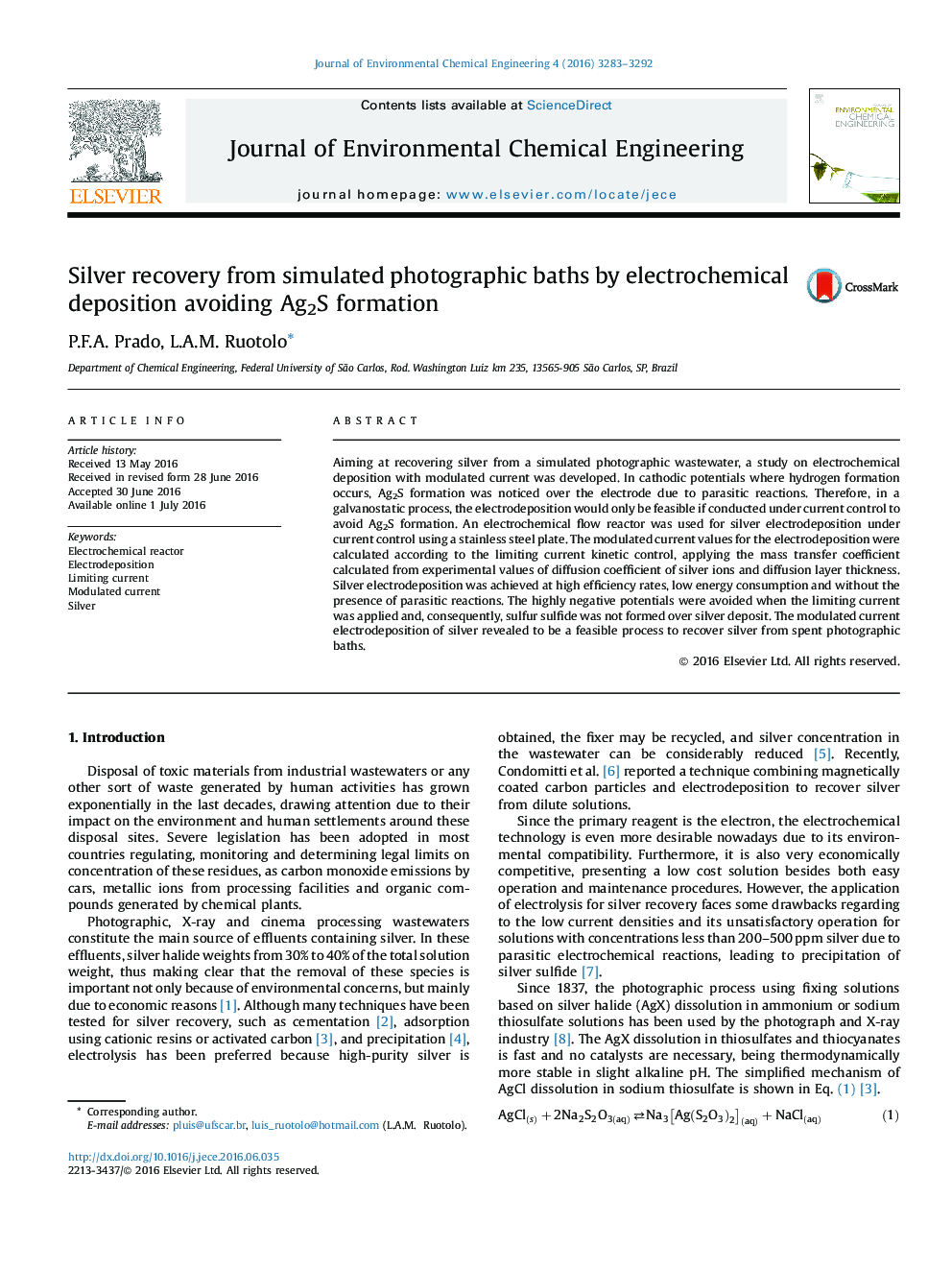| Article ID | Journal | Published Year | Pages | File Type |
|---|---|---|---|---|
| 221595 | Journal of Environmental Chemical Engineering | 2016 | 10 Pages |
•Silver electrodeposition from simulated photographic wastewater.•Electrodeposition was carried out in a flow electrochemical reactor.•Modulated current control ensured high current efficiency.•Ag2S formation was avoided by applying limiting current throughout the process.
Aiming at recovering silver from a simulated photographic wastewater, a study on electrochemical deposition with modulated current was developed. In cathodic potentials where hydrogen formation occurs, Ag2S formation was noticed over the electrode due to parasitic reactions. Therefore, in a galvanostatic process, the electrodeposition would only be feasible if conducted under current control to avoid Ag2S formation. An electrochemical flow reactor was used for silver electrodeposition under current control using a stainless steel plate. The modulated current values for the electrodeposition were calculated according to the limiting current kinetic control, applying the mass transfer coefficient calculated from experimental values of diffusion coefficient of silver ions and diffusion layer thickness. Silver electrodeposition was achieved at high efficiency rates, low energy consumption and without the presence of parasitic reactions. The highly negative potentials were avoided when the limiting current was applied and, consequently, sulfur sulfide was not formed over silver deposit. The modulated current electrodeposition of silver revealed to be a feasible process to recover silver from spent photographic baths.
Graphical abstractFigure optionsDownload full-size imageDownload as PowerPoint slide
